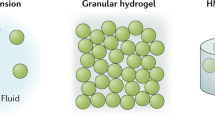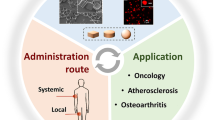Abstract
Conventional micromolding provides rapid and low-cost methods to fabricate polymer microstructures, but has limitations when producing sophisticated designs. To provide more versatile micromolding techniques, we developed methods based on filling micromolds with polymer microparticles, as opposed to polymer melts, to produce microstructures composed of multiple materials, having complex geometries, and made using mild processing conditions. Polymer microparticles of 1 to 30 μm in size were made from PLA, PGA and PLGA using established spray drying and emulsion techniques either with or without encapsulating model drug compounds. These polymer microparticles were filled into PDMS micromolds at room temperature and melted or bonded together to form microstructures according to different protocols. Porous microstructures were fabricated by ultrasonically welding microparticles together in the mold while maintaining the voids inherent in their packing structure. Multi-layered microstructures were fabricated to have different compositions of polymers and encapsulated compounds located in different regions of the microstructures. More complex arrowhead microstructures were fabricated in a two-step process using a single mold. To assess possible applications, microstructures were designed as microneedles for minimally invasive drug delivery. Multi-layer microneedles were shown to insert into cadaver tissue and, according to design, detach from their base substrate and remain embedded in the tissue for controlled release drug delivery over time. We conclude that polymer particle-based micromolding can encapsulate compounds within microstructures composed of multiple materials, having complex geometries, and made using mild processing conditions.









Similar content being viewed by others
References
ASM International, Handbook of Plastics Joining (Plastics Design Library, Norwich, NY, 1997) pp. 35–66.
C.H. Ahn, J.W. Choi, G. Beaucage, J.H. Nevin, J.B. Lee, A. Puntambekar, and J.Y. Lee, Disposable smart lab on a chip for point-of-care clinical diagnostics, Proc. IEEE 92, 154–173 (2004).
D. Armani and C. Liu, Microfabrication technology for polycaprolactone, a biodegradable polymer, J. Micromech. Microeng. 10, 80–84 (2000).
T. Aytur, R. Beatty, B. Boser, M. Anwar, and T. Ishikawa, An immunoassay platform based on CMOS hall sensors. Solid-State Sensor, Actuator and Microsystem Workshop (2002), pp. 126–129.
J. Benoit, H. Marchais, H. Rolland, and V.V. Velde, Biodegradable microspheres: Advances in production technology, in S. Benita (Ed.), Microencapsulaton: Methods and Industrial Application (Marcel Dekker, New York, 1996) pp. 35–72.
B. Bhushan and Z. Burton, Adhesion and friction properties of polymers in microfluidic devices, Nanotechnol. 16, 467–478 (2005).
D.T. Birnbaum and L. Brannon-Peppas, in D.M. Brown (Ed.) Microparticle Drug Delivery Systems, Cancer Drug Discovery and Development, (Human Press, Totowa, NJ, 2003), pp. 117–135.
J. Carlier, S. Arscott, V. Thomy, J.C. Fourrier, F. Caron, J.C. Camart, C. Druon, and P. Tabourier, Integrated microfluidics based on multi-layered SU-8 for mass spectrometry analysis, J. Micromech. Microeng. 14, 619–624 (2004).
L. Draghi, S. Resta, M. Pirozzolo, and M. Tanzi, Microspheres leaching for scaffold porosity control, J. Mater. Sci. Mater. Med. 16, 1093–1097 (2005).
D. Jain, A.K. Panda, and D.K. Majumdar, Eudragit S100 entrapped insulin microspheres for oral delivery, AAPS PharmSciTech. 6, E100–E107 (2005).
S. Jakeway, A. De Mello, and E. Russell, Miniaturized total analysis systems for biological analysis, Fresenius J. Anal. Chem. 366, 525–539 (2000).
K.S. Kim, S.W. Park, H. Manohara, and J.B. Lee, Polydimethylsiloxane (PDMS) for high aspect ratio three-dimensional MEMS, Int. Sym. Mechatronics Intelligent Mech. Sys. (ISIM2000) (2000) pp. 55–59.
J. Kohn and R. Langer, Bioresorbable and bioderodible materials, in B.D. Ratner, A.S. Hoffman, F.J. Schoen, and J.E. Lemons (Eds.), Biomaterials Science (Academic Press, San Diego, 1996), pp. 64–73.
H.J. Lee, G. Riley, O. Johnson, J.L. Cleland, N. Kim, M. Charnis, L. Bailey, E. Duenas, A. Shahzamani, M. Marian, A.J.S. Jones, and S.D. Putney, In vivo characterization of sustained-release formulations of human growth hormone, J. Pharmacol. Exp. Ther. 281, 1431–1439 (1997a).
H.K. Lee, J.H. Park, and K.C. Kwon, Double-walled microparticles for single shot vaccine, J. Control. Rel. 44, 283–293 (1997b).
S.J. Lee, J.R. Jeong, S.C. Shin, J.C. Kim, Y.H. Chang, K.H. Lee, and J.D. Kim, Magnetic enhancement of iron oxide nanoparticles encapsulated with poly(D,L-lactide-co-glycolide), Coll. Surf. A 255, 19–25 (2005).
Y. Li, R.S. Shawgo, B. Tyler, P.T. Henderson, J.S. Vogel, A. Rosenberg, P.B. Storm, R. Langer, H. Brem, and M.J. Cima, In vivo release from a drug delivery MEMS device, J. Control. Rel. 100, 211–219 (2004).
S.R. Little, D.M. Lynn, Q. Ge, D.G. Anderson, S.V. Puram, J. Chen, H.N. Eisen, and R. Langer, Poly-B amino ester-containing microparticles enhance the activity of nonviral genetic vaccines, Proc. Natl. Acad. Sci. (USA) 101, 9534–9539 (2004).
D.V. McAllister, M.G. Allen, and M.R. Prausnitz, Microfabricated microneedles for gene and drug delivery, Annu. Rev. Biomed. Eng. 2, 289–313 (2000).
H.S. Noh, Y. Huang, and P.J. Hesketh, Parylene micromolding, a rapid and low-cost fabrication method for parylene microchannel, Sens. Actu. B 102, 78–85 (2004).
J.B. Park, Biomaterials: An Introduction (Plenum Press, New York, 1980) pp. 59–72.
J.H. Park, M.G. Allen, and M.R. Prausnitz, Biodegradable polymer microneedles: Fabrication, mechanics and transdermal drug delivery, J. Control. Rel. 104, 51–66 (2005).
J.H. Park, M.G. Allen, and M.R. Prausnitz, Polymer microneedles for controlled-release drug delivery, Pharm. Res. 23(5), 1008–1019 (2006).
M.R. Prausnitz, Microneedles for transdermal drug delivery, Adv. Drug Delivery Rev. 56, 581–587 (2004).
J.K. Prescott and R.A. Barnum, On powder flowability, Pharm. Technol. October, 60–84 (2000).
H. Sato, T. Kakinuma, J.S. Go, and S. Shoji, In-channel 3-D micromesh structures using maskless multi-angle exposures and their microfilter application, Sens. Actu. A 111, 87–92 (2004).
M. Schlapp and W. Friess, Collagen/PLGA microparticle composites for local controlled delivery of gentamicin, J. Pharm. Sci. 92, 2145–2151 (2003).
Y.S. Shin, K. Cho, S.H. Lim, S. Chung, S.-J. Park, C. Chung, D.-C. Han, and J.K. Chang, PDMS-based micro PCR chip with parylene coating, J. Micromech. Microeng. 13, 768–774 (2003).
M.N. Silva, R. Desai, and D.J. Odde, Micro-patterning of animal cells on PDMS substrates in the presence of serum without use of adhesion inhibitors, Biomed. Microdevices 6, 219–222 (2004).
M. Vert, G. Schwach, R. Engel, and J. Coudane, Something new in the field of PLA/GA bioresorbable polymers, J. Control. Rel. 53, 85–92 (1998).
G. Voskerician, M.S. Shive, R.S. Shawgo, H.V. Recum, J.M. Anderson, M.J. Cima, and R. Langer, Biocompatibility and biofouling of MEMS drug delivery devices, Biomater 24, 1959–1967 (2003).
G. Vozzia, C. Flaim, A. Ahluwalia, and S. Bhatia, Fabrication of PLGA scaffolds using soft lithography and microsyringe deposition, Biomater 24, 2533–2540 (2003).
Y. Xia and G.M. Whitesides, Soft lithography, Angew. Chem. Int. Ed. 37, 550–575 (1998).
Y.K. Yoon, J.H. Park, F. Cros, and M.G. Allen, Integrated vertical screen microfilter system using inclined SU-8 structures, in IEEE 2003 MEMS Conference (2003) pp. 227–230.
L. Yu, Y.-J. Juang, K.W. Koelling, and L.J. Lee, Thin wall injection molding of thermoplastic microstructures, in Proc. SPE ANTEC, (2000) p. 468.
Acknowledgments
We thank Harvinder Gill and Jeong-Woo Lee for helpful discussions. This work was supported in part by the National Institutes of Health. JHP, RK and MRP are members of the Institute for Bioengineering and Bioscience and the Center for Drug Design, Development and Delivery at Georgia Tech. This work was carried out in part in the Georgia Tech Microelectronics Research Center.
Author information
Authors and Affiliations
Corresponding author
Rights and permissions
About this article
Cite this article
Park, JH., Choi, SO., Kamath, R. et al. Polymer particle-based micromolding to fabricate novel microstructures. Biomed Microdevices 9, 223–234 (2007). https://doi.org/10.1007/s10544-006-9024-4
Published:
Issue Date:
DOI: https://doi.org/10.1007/s10544-006-9024-4




